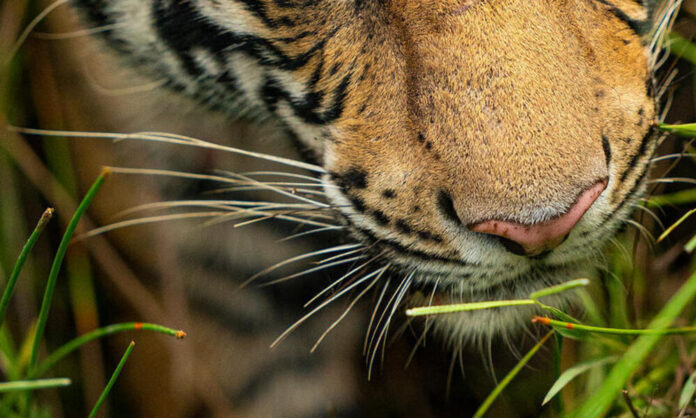Source: World Wildlife Fund
Hong Kong — Wild tiger numbers are declining in all tiger range countries in mainland Southeast Asia, and it is now a near certainty that these countries will have fewer tigers than they did in 2010 – the year the global goal was set to double the world’s wild tigers by 2022.
Over the last 25 years tigers have become extinct in Cambodia, Lao PDR and Vietnam and there have been significant declines in Malaysia, Myanmar and to a lesser extent, Thailand.
Indiscriminate, commercial scale snaring is the greatest threat to tigers in Southeast Asia. There are an estimated 12 million snares on the ground throughout protected areas in Cambodia, Lao PDR and Vietnam – countries where tigers are already locally extinct and a sign of what the rest of the region faces without strong action to stop this crisis.
Other major threats include habitat loss due to infrastructure development, illegal logging and agriculture expansion, and the illegal trade in tigers and tiger parts. The equivalent of 1,004 whole tigers were seized from traffickers between 2000-2018 in Southeast Asia, while 8,000 tigers are estimated to be in captivity in China, Laos, Thailand and Vietnam, continuing to undermine law enforcement and stimulate demand for tiger products.
Tiger ‘farms,’ facilities that breed tigers to supply or directly engage in the commercial trade of tiger parts or products, are the source of the growing captive population across Asia. World Wildlife Fund (WWF) is calling on governments in China, Lao PDR, Thailand and Vietnam to phase out their country’s tiger farms and end the trade in tiger parts from any source.
Despite the overall decline of tiger numbers in the region, there are significant success stories to build on. For instance, anti-poaching patrols led by Indigenous community members in Malaysia’s Belum Temengor Forest Complex have contributed to a 94% reduction in active snares since 2017. And in Thailand, tigers are dispersing from Huai Kha Khaeng Wildlife Sanctuary into other protected areas thanks to strong protected area management and connectivity.
“Collaboration between government, non-governmental organisations, corporate partners and local communities have already reduced poaching in Malaysia’s Belum Temengor Forest Complex. We now need to scale this up across the country and match it with strong political will and investment,” said Sophia Lim, Executive Director and CEO of WWF-Malaysia.
“Recovering Southeast Asia’s tigers will also help mitigate climate change, protect water catchment areas, reduce the impact of natural disasters, and provide livelihoods for local communities.”
Governments in Southeast Asia have a chance to reverse declining tiger numbers by endorsing a Southeast Asia Tiger Recovery Action Plan that will be tabled at the fourth Asia Ministerial Conference on Tiger Conservation. This is being hosted by the government of Malaysia in November. Possible elements of the plan include an increase to protected area budgets including rangers on the ground, and high-level political oversight for tiger conservation through the establishment of National Tiger Committees chaired by the head of government. Other elements of the plan should also include identifying opportunities for tiger translocations and reintroduction, and addressing the illegal trade of tigers and tiger parts.
Some of these measures have been adopted with success in other countries. India for instance is applying best practices in the management of tiger conservation areas, with the announcement today of 14 sites approved under the Conservation Assured Tiger Standards (CA|TS) – a conservation tool that sets standards to manage target species and benchmark progress. There are currently 100+ CA|TS sites globally, covering more than 70% of the global tiger population, with sites registered in Bangladesh, Bhutan, China, India, Malaysia, Nepal and Russia.
“As we have found in the countries where tigers are recovering, political commitment is perhaps the most important ingredient in successful tiger conservation,” said Ginette Hemley, Senior Vice President for Wildlife Conservation, WWF-US. “Like most cats, tigers breed well when they have enough space, prey and protection. We have proven recovery is achievable when governments, communities, conservation organizations and other partners work together.”
Stronger conservation policies in the U.S. could help spur much needed policy changes in tiger range countries. WWF is calling upon Congress to pass the Big Cat Public Safety Act. This piece of legislation is a first step toward effective oversight of the thousands of captive tigers scattered across the U.S. and will help prevent captive tigers from ending up in the illegal trade in tiger parts and products, one of the primary threats to the species in the wild.



